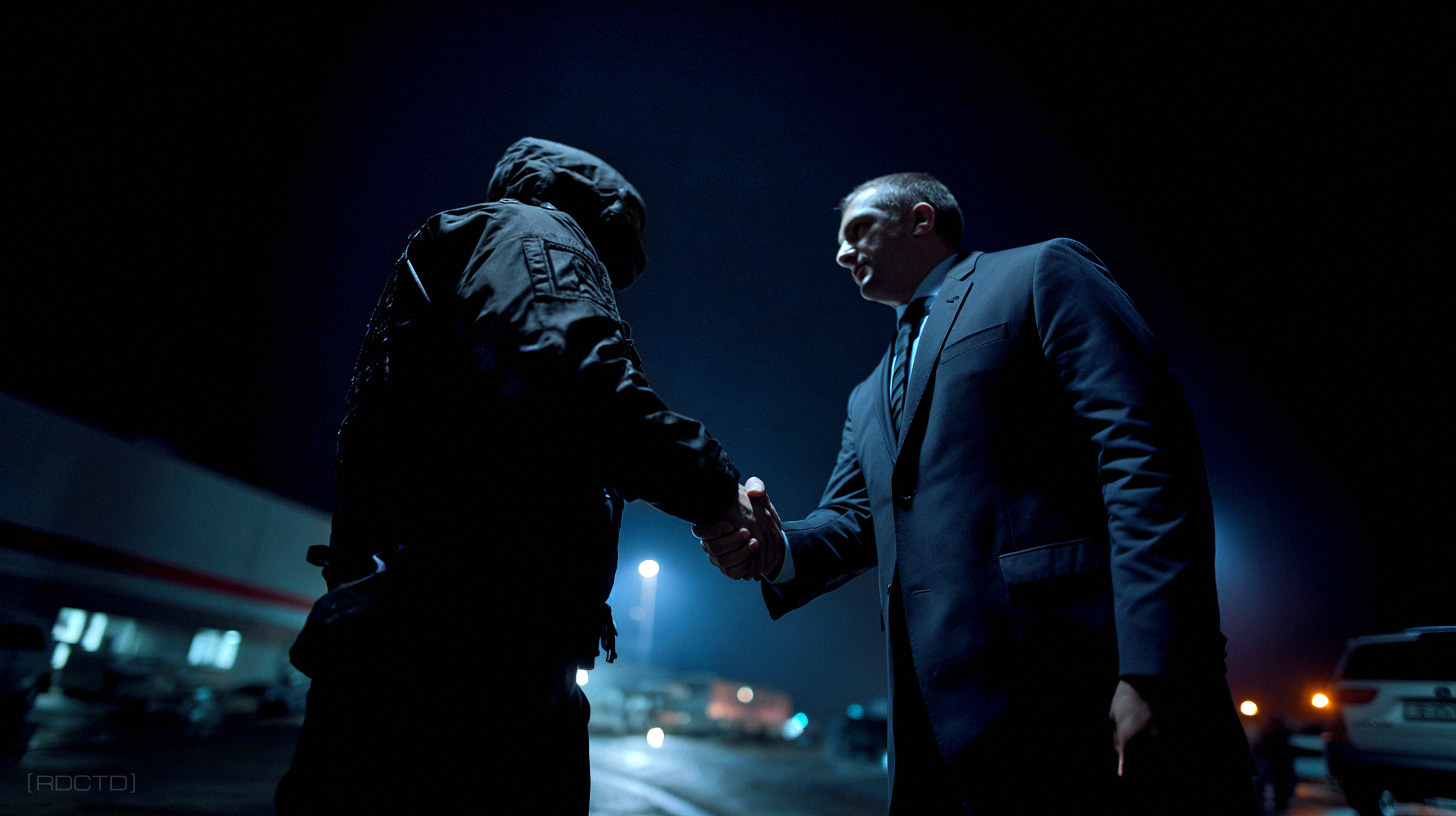Handshake Threat Assessment (Lite Version)
Subtle Human Reconnaissance
A fast, covert read of someone’s threat level and intent - delivered under the perfect cover of ordinary civility.
Use the handshake as your first silent capture of intent. The signal is quick and deniable, but it tells you who might escalate, who might stall, and who needs closer surveillance. Log the read, adjust your posture, and let the rest of the interaction confirm or challenge your initial assessment. Proceed accordingly.
The moment is brief, polite, and predictable, which gives you room to read without signaling anything unusual. It sets the tone and puts you in information-gathering posture before a single word is exchanged.
Evaluate their hand return path, an unnatural arc can signal concealment habits from carrying tools or weapons.
Hidden Sensor
A handshake slips past people’s defenses because it feels ordinary, but it lets you gather information before they’ve settled into their social act.
In those opening seconds, posture, pressure, and micro-movement show you how they carry stress and how quickly they adjust to physical contact.
It’s reading the person before they’ve had time to shape the interaction, which gives you an early advantage. You’re looking for enough signal to adjust distance, tone, and positioning. This keeps your threat picture active without breaking rapport.
It also lets you gauge how the target reacts to touch, which reveals more than words ever will. It can become a quiet habit that sharpens your read before any real conversation begins.
Watch (without directly looking) their off-hand during the shake, its position telegraphs intent faster than grip strength.
Baseline Scan
Before contact, take a moment to read the environment and the individual. How they move, how they approach, and how they manage distance already tells you a great deal.
Someone who closes space too fast, leads with a shoulder, or telegraphs tension is worth watching. Someone calm, balanced, and neutral usually stays that way.
These pre-contact reads anchor your judgment so you don’t misinterpret the handshake itself. If the baseline feels off, adjust your stance early and let the handshake confirm the trend.
A strong baseline also exposes any mismatches between their approach and their behavior during contact, which is often where real intent leaks. It keeps you ahead of the interaction instead of reacting to it.
Observe their breathing pattern after release, shallow recovery breaths mark suppressed adrenaline.
Contact Read
When the hands meet, keep your grip neutral and steady so you’re sensing - DON’T compete. You’re gathering information through pressure, rhythm, and any attempt to influence your wrist or space.
Strong and smooth usually points to controlled capability, erratic or forceful often exposes insecurity or a need to dominate. Weak or hesitant contact can mean nerves, concealment, or someone masking a physical limitation - useful data, but never a final conclusion.
Key tactile cues to monitor during contact:
Keep reading with a 7-day free trial
Subscribe to Covert Operative Guide to keep reading this post and get 7 days of free access to the full post archives.



